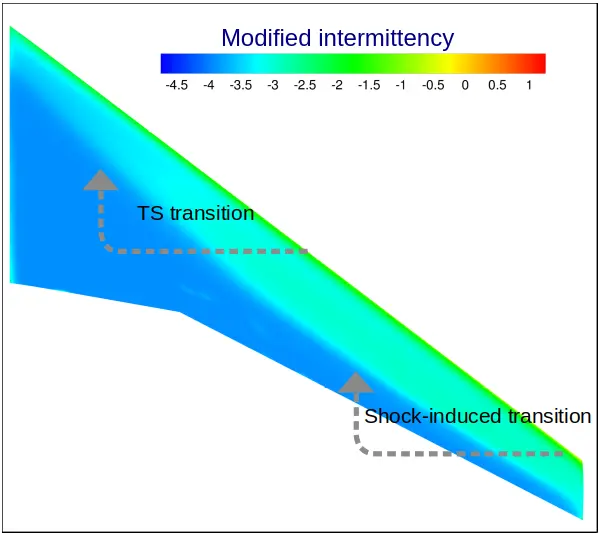AERODYNAMIC MODELING AND ADJOINT-BASED SHAPE OPTIMIZATION CONSIDERING TRANSITION TO TURBULENCE

PhDAER Seminar
Thursday, September 19, 2024, from 12:00 until 13:30- Sala Consiglio DAER - Dipartimento di Scienze e Tecnologie Aerospaziali, Building B12, 2nd floor - Politecnico di Milano, Campus Bovisa, Via La Masa, 34, Milano (MI)
The ability to model transition to turbulence is important when performing computational fluid dynamics (CFD) simulations for aircraft configurations.
The design of low-drag, laminar flow airfreams depends on the inclusion of such effects in the CFD simulations.
Additionally, wings that are not designed to sustain laminar flow may present laminar boundary layers in some flight conditions, two examples being the low-Reynolds number flow over high-lift devices and the cruise configuration wings of regional jetliners.
Transition prediction is also relevant in propeller flows, in which shear-driven crossflow (CF) modes can trigger transition to turbulence. However, despite the relevance of accounting for transition to turbulence prediction in CFD simulations, practitioners still miss robust, optimization-compatible tools that are able to consider this phenomenon.

In this talk, a nonlocal, nonparallel flow stability analysis tool is wrapped in a transition prediction module.
This module is coupled to a Reynolds-averaged Navier-Stokes (RANS) model in a discontinuous Galerkin (DG) flow solver that considers target-oriented mesh adaptation based on adjoints.
A modified RANS model that considers transition through the inclusion of additional transport equations is also investigated and modified to be compatible with gradient-based optimization.
This modified RANS model is used to perform adjoint-based aerodynamic shape optimization of airfoils in subsonic and transonic flight conditions. The numerical results indicate interesting insights and suggest that relevant drag reductions can be achieved by including transition in the design process.
Adjoint-based shape optimization for transonic wing design and propeller-wing interaction investigations are also addressed.
Speaker:
Gustavo L. O. Halila Ph.D., Aerospace Engineering University of Michigan, Ann Arbor
Free admission, open to all members of the university community and the public, subject to availability.
10.09.2024